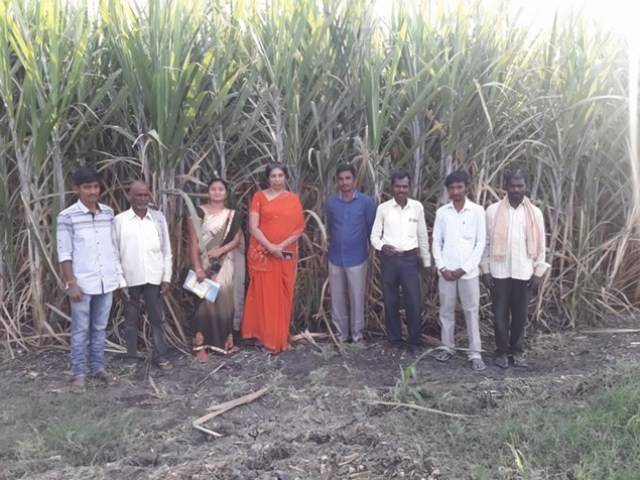
The young farmer, Murlidhar Reddy, is a happy man as he looks at the tall sugarcane crop on his fields. He has managed to grow the crop well over 14 feet, towering over the neighbouring fields. The catch however is, that he has managed the feat in a drought-hit district within Andhra Pradesh, by simply switching to the practice of natural farming.
Reddy takes great pride in describing the dimensions of the sugarcane crop, now rich in purple. “They are nearly 14 feet high and 6 cm in diameter. And now, shoots are springing up in between the sugar cane plants. Some of these shoots will be 4 to 5 feet tall by the time the crop is ready for harvest,” he shares. This crop will be ready for harvest in the next few months and Reddy expects 60 to 70 tons against a normal yield of 40 to 45 tons, only with the help of natural fertilisers.
His story gives hope to farmers across India, at a time when our country is grappling with cases of farmer suicides.
Reddy, with the help of Sri Sri Institute of Agricultural Sciences and Technology Trust of the Art of Living and the Andhra Pradesh government has successfully changed his circumstances and turned the odds of crop failure by switching to natural farming techniques in a short span of time.
His journey began in 2016, when Sri Sri Institute of Agricultural Sciences and Technology Trust (SSIAST) of Art of Living was assigned the natural farming project by the Government of Andhra Pradesh. Soon volunteers of SSIAST approached Reddy in his village of Kethavaram in Kurnool district with the prospect of switching to natural farming.

He agreed and decided to experiment with natural farming on 2 acres of his land then; and now he has expanded to 9 acres out of 36 in 2018.
“I felt that it would be good to take-up natural farming when I was approached by SSIAST in 2016. I wanted to do something better as soil here is black. When Art of Living volunteers told me about natural farming, I decided to experiment. I am so happy, I tried as today because of natural farming, the quality of the soil has become good and the crop has improved drastically as you can see from the sugarcanes,” shared Reddy.
To help farmers like Reddy make a smooth transition, trained mentors from SSIAST would visit fields on a daily basis and help farmers. Reddy, deeply thanks his mentor Smt Eswaramma, who was helping farmers in his village of Kethavaram in Kurnool district.

Reddy, like many other farmers, is also rejoicing the fact that the poor quality of his black refractory soil is slowing changing and that too, at nearly one-fifth the expense of chemical fertilisers. Now, he spends only Rs 10000 per acre against Rs 50000 per acre spent earlier in chemically cultivated crop.
He does however share that the process of natural farming requires more time and demands patience from farmers, but SSIAT takes all initiatives to reduce the workload of even the smallest farmers who double up as labour on the fields.















